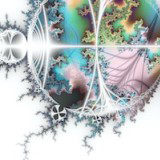Maps are ways to access notes quickly, in a context. Much more than just an index, they organise and relate, include searches/tags even for quick access.
TIP
Visit this site’s List of Maps of Content.
The three phases of a Map of Contents creation are are:
- Assembling ideas together in one place
- Colliding ideas. Bring them together. Thinking required
- Create unifying structure around all the notes an ideas
Trigger for this is a Mental Squeeze Point - feeling uncomfortable things will get lost.
Maps of Content remind me of Concept Mapping but in text form. They are similar because they link concepts together. The difference is that one is textual and the other visual. Maps of Content are great in a note-making tool (and the graph in Obsidian helps with relationships) but for getting ideas across to another person it is difficult to get the picture with text. The text is personal. Clustering of ideas is also more likely to be obvious with a visual representation.
A Helpful Explanation
Explaining Maps of Content to someone who is unfamiliar with Personal Knowledge Management, can be easily done as follows.
A Map of Content helps people navigate quickly to the content that is important to them. It can be followed to the letter, or used as a jumping off point. Imagine you are visiting a new town and want to maximise your time by seeing the best there is to offer. The “Map of Content” you are given by the local tourist information office depends on the length of your stay, the season, your budget, your mode of transport… The content (attractions) are the same, the map is different in each case.
